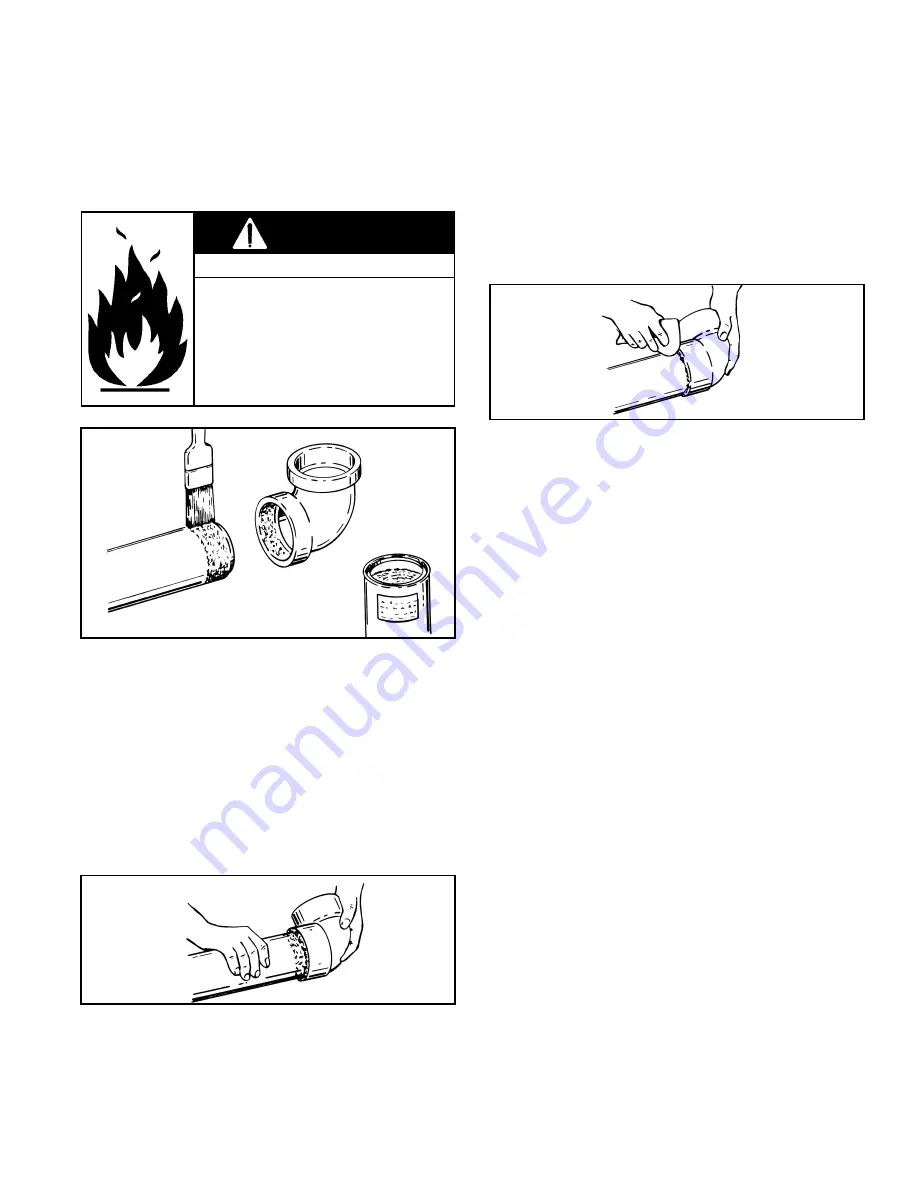
36
www. lochinvar .com
100221773_2000189439_Rev. 01
E. Application of solvent cement
•
Apply solvent cement evenly and quickly
around outside of pipe at a width a little
greater than the depth of the fitting socket.
•
Apply a light coat of cement evenly around
the inside of the fitting socket. Avoid puddling.
•
Apply a second coat of cement to the pipe
end.
•
Cans of cement and primer should
be closed at all times when not in
use to prevent evaporation of
chemicals and hardening of cement.
•
They are also very flammable and
should be kept away from heat or
flame.
Fire Hazard
WARNING
Figure 43.
F. Joint assembly
Working quickly, insert the pipe into the fitting
socket bottom and give the pipe or fitting a 1/4 turn
to evenly distribute the cement. Do not continue
to rotate the pipe after it has hit the bottom of
the fitting socket. A good joint will have sufficient
cement to make a bead all the way around the
outside of the fitting hub. The fitting will have a
tendency to slide back while the cement is still wet
so hold the joint together for about 15 seconds.
Figure 44.
G. Cleanup and joint movement
Remove all excess cement from around the pipe
and fitting with a dry cotton rag. This must be done
while the cement is still soft.
The joint should not be disturbed immediately
after the cementing procedure, and sufficient time
should be allowed for proper curing of the joint.
Exact drying time is difficult to predict because
it depends on variables such as temperature,
humidity and cement integrity. For more specific
information, you should contact your solvent
cement manufacturer.
Figure 45.
















































